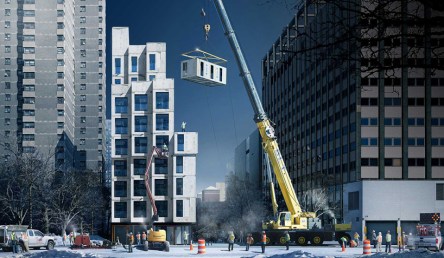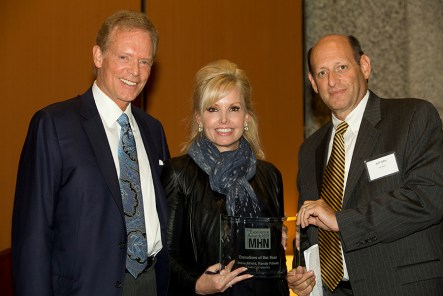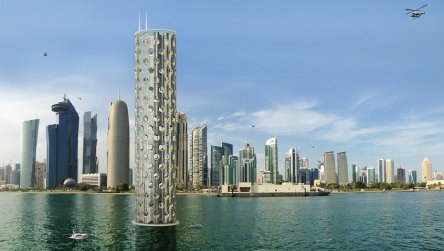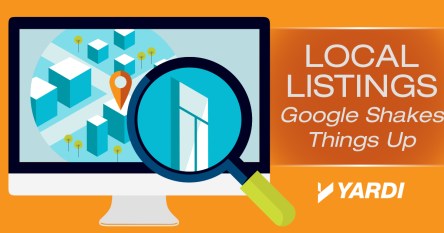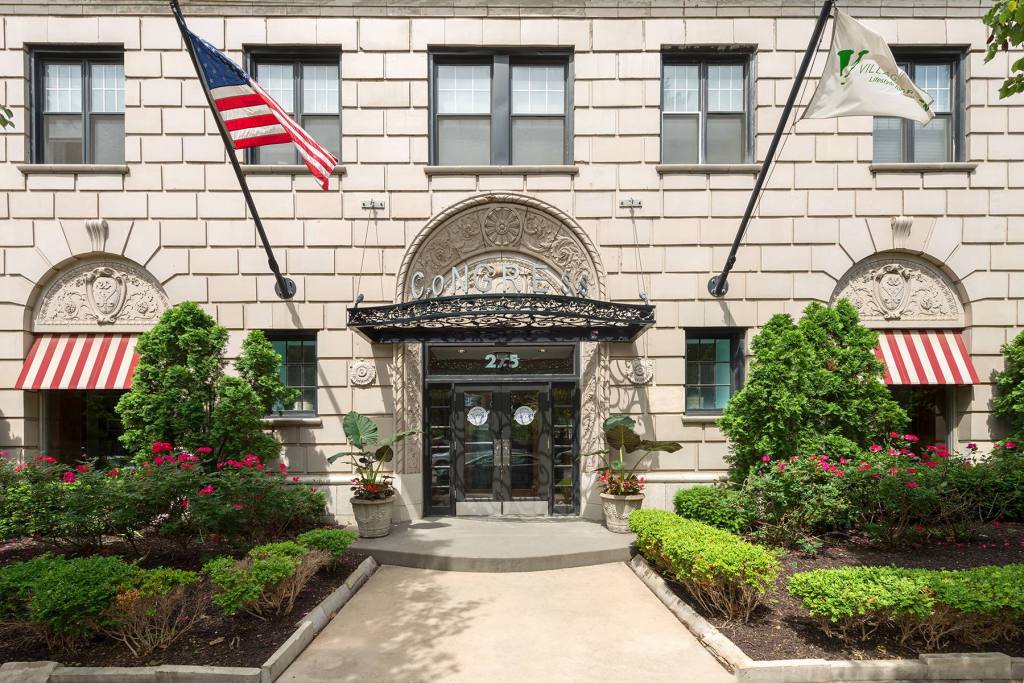What can you get for less than 400 square feet? How about a gym, a roof terrace, stainless steel appliances and the chance to finally ditch the roommates and lay claim to your own slice of paradise. That’s the option currently being offered by Carmel Place, New York City’s first ever micro-unit development. Originally called, “My Micro NY,” this Lower East Side building includes 14 affordable housing units and is set to open in February of 2016. Sitting smack dab in the middle of Kips Bay, the newly christened Carmel Place will be New York’s tallest modular building. Winner of the 2012 adapt NYC competition, which strove to uncover a solution to the City’s housing problem, Carmel Place came about through a collaborative effort between Monadnock Development and the Lower East Side People’s Mutual Housing Association. The project’s designers, naArchitects, chose modular materials to reduce construction time, and a series of architectural flourishes make use of vertical spaces to create a sense of openness and light. Built in the Brooklyn Navy Yard and delivered by truck via the Manhattan Bridge, the nine-story Carmel Place apartments rise up on 333 East 27th street like a set of building blocks – gray in color, but multifaceted in the opportunities they promise to weary urban renters looking for a small space they can call their own. Each unit comes outfitted with kitchenettes, mini-fridges, and a two-burner/microwave combination in place of a stove. While the bathrooms are restricted to showers only – no claw foot tubs in this joint – all the apartments are wheelchair accessible. The designers made sure to incorporate large windows, Juliette balconies and 9.5ft windows to create a sense of openness and light. With hardwood floors and mostly white cabinetry, sample photos project a...
2016 Real Estate Trends
New year brings similar questions
For both the residential and commercial real estate markets, 2015 brought questions. Would interest rates rise? Would Millennials buy? Would the market keep rising, or are we on the verge of another bubble? As the year draws to a close, these questions remain, though the prevailing mood is optimistic. While the overall market continues its upward climb, moderation has taken hold. It’s clear the gains and price inflations of the past 12 months are giving way to gradual increases, better credit scores and (slightly) upward momentum. In October, PricewaterhouseCoopers and the Urban Land Institute (ULI) released their annual Emerging Trends in Real Estate report. With an eye towards predicting anticipated real estate trends for 2016, the report’s authors conducted over 400 interviews and collected almost 1500 responses. Participants included investors, fund managers, brokers and consultants. The report’s overall mood? Cautious optimism. “You can never forget about cycles,” declares the report, “but the next 24 months look doggone good for real estate.” Commercial Uprising For the commercial real estate market, positive employment numbers are spurring demand for business centers and high-rises. In New York City, for example, over 9.7 million square feet of office space will be added in the next year – an increase unseen in the city for over two decades. The ULI report authors believe that many of these new commercial spaces will include innovative, modern designs created to lure young, in-demand talent. A combination of “entrepreneurial innovation matched up with industry acceptance,” these buildings will dominate a small, but influential corner of the commercial real estate market, pushing projects and encouraging investment. In order to capitalize on this trend, commercial real estate executives will need to be able to analyze property data, control budgets and make future projections quickly and accurately. With an end-to-end, commercial property management platform like Yardi Voyager Commercial, commercial real estate owners, investors and developers can efficiently manage operation strategies and maneuver funds and resources effectively and profitably. The Rise of the Second City Though New York City and San Francisco are real estate behemoths casting large shadows across their respective coasts, their more humble neighbors will soon steal the spotlight. Deemed “18-hour Cities” in the ULI report, these smaller metropolises are beginning to experience population growth and increased commercial real estate investment – a trend the report anticipates will only grow stronger in the coming year. Hot markets like Austin, Denver or Charlotte, along with mid-sized townships sitting along the borders of Dallas, Atlanta and Seattle, can trace much of this commercial activity to the addition of “round-the-clock” businesses. Restaurants, shops and other professional services are beginning to expand their hours of operation from the standard 12 to 18 or more. For potential residents, access to all the amenities of a larger metropolis like New York City at a more affordable price is attractive. The ability to strategically market to disaffected city-dwellers will be essential to capitalizing on this migration trend. One way real estate professionals, property owners and managers can take advantage of renewed interest in their area is to leverage dynamic, multi-channel marketing with tools like those offered by RENTCafe®. With the RENT Café®, users will be able to entice prospects and retain current residents with marketing campaigns precisely fashioned to highlight the benefits of moving to these up-and-coming second cities. Slice of the Suburbs With all the excitement surrounding the urban real estate market, you’d think the suburbs would be slowly fading into oblivion. Instead, multitudes of Millennials are migrating to the outskirts of town. As this generation finally ages into marriage and family, many of those young urban hipsters will soon be trading in their rented lofts for suburban homesteads. They won’t just be embracing the dream of the white picket fence. These young home buyers will be following the job market. Almost 85% of new employment opportunities continue to be “located outside the center-city core” according...
Michael Pestronk
Post Brothers Apartments
Over the last eight years, Michael and Matthew Pestronk, CEO and President of Post Brothers Apartments, have created a unique brand of Class A apartments for the Philadelphia market. Their latest major project is no exception. Presidential City, a John McShain project built in the early 1950’s that Post Brothers acquired in 2012 for $51 million, needed a fresh start. Updates had never been made to the 1,038 apartment interiors, and as Michael Pestronk says, “it just had not had any love in a really long time.” Kitchens were three decades old, bathrooms dated a half-century back. The first of four apartment towers was delivered this fall and is completely occupied. The $210 million redevelopment project is a complete renovation and reimagining of Presidential City. Each tower will have a unique theme and character, and the former Pool Club is undergoing a transformation to a world class spa and health club. “We’re making something that’s truly world class,” Pestronk says. Read on for more insight on Presidential City. This is a huge project. Can you put the size and scale in context? Pestronk: This is the largest residential development in the city of Philadelphia. Not just in the city proper, but also in the surrounding region. It’s located at the intersection of two of the heaviest trafficked highways in the region. It’s also very physically prominent. John McShain was from Philadelphia and built most of the monuments in Washington, D.C. He originally had a master plan to do 48 towers with something like 20,000 Philadelphia apartments. He built the first four, and eventually sold off the rest of the land. What is the overview of the renovation plan? Pestronk: We are not just renovating, but completely redeveloping. The outside façade of the properties looks...
Executives of the Year...
Steve and Randy Fifield
You may think the secret to success is money, recognition or luck, but Steven and Randy Fifield, MHN’s 2015 Executives of the Year, shared that their success started with peanut butter and jelly. At the annual Multi-Housing News Excellence Awards on October 14th at Club 101 in Manhattan, the Fifields engaged in a panel discussion with Yardi Matrix Vice President Jeff Adler (photo, left), and shared some advice, insights and anecdotes from their long careers in real estate as Chairs of the Fifield Companies. While discussing the ins and outs of experiential marketing, Randy said that in order to make apartment living attractive to busy professionals with money to spend, she’d serve peanut butter and jelly sandwiches to people who work in the area and would stop in on their lunch break. “What they do is they work in the CBD (central business district) and then they come home to let the dog out because we have beautiful parks around the neighborhood, and they’d eat peanut butter and jelly because they could talk on the phone and nothing would drip on them and they’d let the dog out, have this great life and then walk back to work,” she said. Obviously the road to success is not literally paved with peanut butter and jelly, but serving homemade sandwiches is just one anecdote that personifies the Fifields’ knack for giving renters what they want before they even know exactly what that is. It’s not an easy feat, especially in a market where the renters themselves are evolving almost as quickly as their demands are. “The median age has been moving up; 95 percent of the renters are college graduates. The median income in virtually all these transit-oriented urban projects has been over $100,000. It’s a totally different market,...
Special Delivery
Tech for Multifamily Mail
The holidays are coming… and with them comes a huge increase in resident packages! Are you ready? If that thought made you shudder a little bit, you’re not alone. Apartment communities and high-rise buildings see a dramatic influx of deliveries during the months of November and December. The question of how to deal with them in a way that will make both residents and staff happy is on every property manager’s mind right about now. First, we’ll take a look at some shipping stats so you can see exactly what communities just like yours are up against. Then we’ll identify challenges that every property faces. Finally, we’ll show you how simple technology solutions can help you handle shipments more efficiently. Because even Santa could use a hand during this time of year! The Stats Did you know that the typical apartment community can receive as many as 100 packages in a week—and that number can DOUBLE during the holidays? Last year, the National Multifamily Housing Council (NMHC) took a closer look at package delivery by the numbers. Take a look at their wonderful infographic below to see stats at a glance. We can only imagine that the numbers will be even bigger this year! The Challenges “When you receive 200 or 300 packages a week, it puts tremendous pressure on the staff to manage the influx of deliveries. And with 90 percent of retail sales still taking place in brick and mortar buildings, we’re only at the tip of the iceberg in terms of e-commerce,” said Rick Haughey, NMHC Vice President of Industry Technology Initiatives. The challenges that most community managers face regarding parcel deliveries really come down to three things: storage, manpower and resident notifications. Package storage: Where will you store packages after...
Modular Multifamily
Time + Cost Efficiency
Modular single-family homes are old news in the United States. Modular multifamily, however, is just catching on. American multifamily firms are experimenting with modular apartments—and they love the results. Residential modular construction in the US has increased by 32.8 percent since 2007 according to the Modular Building Institute. The boost in projects comes as builders begin to realize the benefits of off-site construction. Benefits include: shorter cycle time since units are built in a controlled environment with fewer unexpected delays and setbacks improved energy efficiency minimal-to-zero material cost overrun lower labor costs consistent finished products Tricorp Hearn Construction of Sacramento experienced these benefits firsthand with its most recent multifamily project. Tricorp chose a modular construction plan for its Eviva Midtown complex. The finished product will be six stories high, including 118 units, each at 12 x 64 feet and weighing 35,000 lbs. The pre-fabricated units will rest atop 5,000 square feet of retail space and an underground parking garage. The project is slated for completion in spring 2016. Total production time for the modular complex is just 18 months. That’s notable savings over the 24-month estimate used for conventional construction. So far, the project is on schedule, on budget, and already piquing the interest of apartment seekers. Modular construction does have its disadvantages. Disadvantages include: increased lead time as much as 150% more resource usage, since units do not share walls, floors, or ceilings high product transportation costs lack of skilled labor, as few architects and contractors have experience with large-scale modular projects and fewer laborers know how to combine units For most developers, the benefits outweigh the disadvantages. Since modular buildings have faster cycle times, they can begin earning rents faster. This can result in greater profits than their site-constructed counterparts. Equity Residential’s...
Improve Focus + Morale
Recovering from Summer Sales
In multifamily, summers can be intense. Resident turnover is at its highest, career development conferences hit their peak, and you’re caught working with a skeleton crew because part of your staff has cashed-in on its vacation hours. Now that school has started, things may have calmed down, but your head is still spinning. These three tips will help you reconnect with your team and get back on track for the fall. Change of Scenery Nothing says, “fresh start” like new interior designs. Start with paint colors, which can make the greatest psychological impact on your team. If you’re going for a full makeover, Entrepreneur recommends beginning with a neutral tone. Then select an accent color in the blue family (various shades of blues, greens, and violets). Cooler colors are calming and refreshing, which may be just what you need to set a fresh perspective for the new season. Purples may be a good choice if you want to stimulate creativity and imagination. Want to give your crew a burst of energy and optimism? Use a member of the yellow family (yellows, oranges, light greens) as your accent color. Are there colors to avoid? Absolutely. On a large scale, white is perceived as sterile and uninspiring. Red is another color to avoid in large quantities. Some say that red is the signature color of negotiators. More sources suggest that reds can conjure feelings of anxiety and discomfort. The type of paint that you use is also important. Forbes recommends eggshell and satin paints. The slight sheen evokes energy and liveliness. Also, opt for no-VOC brands that promote better indoor air quality and healthier work conditions. Pops of Greenery Studies suggest that the presence of plants in an office can improve productivity, morale, and sales. Research led by Dr. Virginia Lohr of Washington State University concludes that plants in the workplace increase productivity by 12 percent. It gets better. Research led by Dr. Roger S. Ulrich of Texas A&M University revealed that the sight of plants can lower a person’s blood pressure and reduce stress. Ciphr states that the presence of plant life in an office space can reduce anxiety by 37 percent, reduce fatigue by 38 percent, and decrease feelings of anger and hostility by 44 percent. Asking for higher rents? Plants can also boost the perceived value of your property. In retail environments, shoppers are willing to pay about 12 percent more for goods sold in a shopping center with greenery than in a center without plants. You don’t need a green thumb or a high budget for exotic, magical plants. Any plants will do. The important thing is to get plants that you and your team can maintain. (Dying plants might reverse the aforementioned positive benefits.) Succulents and ferns tend to be the easiest plants to care for and can adapt to varying water and light scenarios. Celebrate Your Accomplishments Want to boost your team’s morale instantaneously? Recognize team members for their hard work. Disappointed by their overall performance this summer? Find what was done well and shout it from the rooftops. Odds are, your team already knows its shortcomings and struggles. Reminding people of their faults rarely encourages improvement. Encouragement and positive change come when team members are reminded that they are capable and that their efforts will be acknowledged. Central Michigan University professor Heather Kchodl tells Chron that positive reinforcement is best when issued sincerely, consistently (no picking favorites), and immediately after the desired behavior or action has taken place. Don’t wait until the winter holiday party to tell your team what a great job they did during this...
Quick Social Tips
For native marketing success
The basics of native marketing for social media have helped you get started. It’s the nuances of daily content development that will firmly establish your roots and nourish respect among your fan base. We’ve got four content tips that can grow your social media from a seedling into a sprawling success! Blend In But Don’t Fade Fresh, frequent content is a great first step. Now focus on creating content that impacts viewers in milliseconds. When scrolling through their feed, does your content stand out? On one hand, it shouldn’t stand out. The style of your image should blend with the style of the images around it. A stock photo may work for LinkedIn but it’ll be shunned on Snapchat. An immaculate image for Pinterest may garner less interest from artsy, down-to-earth Instagram users. Your images should blend into the community. On the other hand, you don’t want your content to fade into the background. How do you know when you’ve struck the balance? When you’ve created an image that you and people that you know would want to retweet, share, or repin: images that are bright and bold, that reflect the energy of a crowd or movement, that use interesting angles or lighting, or those that simply make you stop and smile. Those are all features that catch your attention, right? Deliver that to your fans. Establish Quick Brand Identity Users should not have to read much or focus too hard to identify your brand. If they have to find your little profile icon on the left of a post, you’ve made them work too hard. Establish quick brand identity by adding your logo as a watermark or having your logo or community name visible within the background of the image. If your community...
Fall Staging Tips
Property Management
As a property manager, taking the time to stage your property shows prospects that you’ve got it together. You are prepared, detail-oriented, and organized. You want guests to feel welcomed and comfortable on your property. Such nonverbal marketing turns prospects into tenants. The decorating tips below will make your last-minute fall decorations quick and simple. Interior Decor Your property is likely one of a dozen that a tenant has considered. To make your property memorable, skip the obvious choice of fake pumpkins and scarecrows. Step outside of the average color palette by adding purple and gray to your autumnal arrangements. Use gray as your neutral instead of (or with) black, white, or brown. Purple is a beautiful contrast to fall’s popular reds, oranges, and yellows. Art it Up Wall art is easy to change out with each season. Choosing art with fall colors is a subtle way to celebrate the season even if the subject of the painting does not include fall imagery. Comfy and Cozy Play with the arrangement of throws and quilts. These little touches can instantly transform a nondescript couch into a welcoming retreat. Quilts can also double as wall art. A Savory Smell Scent creates a strong bond to memory. A few carefully placed candles or essential oil diffusers will go a long way towards creating lasting memories for visitors. Pumpkin and apple scents are always a favorite at this time of year. For a more creative touch, consider clove, anise, fennel, and other cooking spices that are common during holiday meals. Exterior Decor Exterior designs can be tough: brown grass, sparse foliage, dry–or worse, soggy–leaves on the ground. In some areas, the best thing that you can do for your property is to keep it tidy: frequently...
Local Listings
Google Shakes It Up
Where were you on the night of August 6? While you were probably sleeping (we certainly were), Google rolled out changes to the way local businesses appear in search results. This update affects everyone from restaurants and retail stores to—yep, you guessed it—apartment communities and property management companies. What? Google has updated how local results appear to both desktop and mobile searchers. Before the update, seven local businesses would appear under the map that displays local search results. After the update, only three local businesses appear. What was known as the “7-pack” by SEO experts is now the “3-pack.” Instead of ranking in the top seven local results for a search, you now have to rank in the top three to show up on the first page. Why? While Google has called this an update that “provides people with more relevant information,” multiple sources have suggested that this might be a move to encourage more businesses to use AdWords, Google’s pay per click (PPC) advertising tool. When the chance that you will appear in organic search results is reduced, you will probably be more inclined to pay for priority placement. How will it affect property management? Less space is dedicated to local results Before your business had to rank in the top seven to appear organically, now it has to be in the top three Less information now appears under the local listings; exact addresses and Google+ links have been removed Business hours have been added On mobile searches, reviews and the click-to-call button appear (websites do not) On desktop searches, reviews and website links appear (phone numbers do not) Although fewer local listings are now instantly visible, when a user does click through to get more information about local results, 17 additional local...
Waterfowl Invasion
Ducking Ducks and Geese
If you find waterfowl descending upon your property twice a year, you are not alone. There are thousands of multifamily properties just like you that are unfortunate enough to rest along waterfowl flyways. You are not alone. We are here to help. Unless you’re a hunter, you probably didn’t notice the release of the 2015 Waterfowl Breeding Population and Habitat Survey. What you will want to know—and would probably figure out sooner than later—is that waterfowl are about to take over your world. The survey revealed that the estimated duck population in the US is 49.5 million. That’s 43 percent above the long-term average. For multifamily properties within the waterfowl migration path, that means that you will have an increase in residents between now and November. They will not give you rent money. Instead, they will block traffic each day with their adorable duck parades. They will ruin your residents’ picnics, chasing them for even the tiniest morsel of bread. (Those are likely spoiled harbor birds from New England. They can’t help themselves.) They will leave so much poop throughout your property that you will pray for more dogs. Each morning they will quack, quack, quack until you pull your hair out from the roots. What’s worse, residents and their kids may try to befriend the waterfowl. They may even try to pet them and swim with them. This can lead to the transfer of nasty parasites. You don’t have to be a victim of the pending waterfowl invasion. Take these measures to make their stay more bearable and maybe keep them from visiting altogether. Don’t feed the ducks or geese. As you may notice, pampered, entitled geese are the most insufferable geese. Secondly, human food is terribly unhealthy for waterfowl. Bread and crackers...
Hurricane Season
Prepping Your Residents
Hurricane season is upon us, and it will linger until the end of November. Fortunately for the continental US, the storms seem to have forgotten their curtain call! It’s unlikely that their delay will last forever, though. Use this downtime to make sure that your residents are prepared for nature’s fury. Make hurricane preparedness fun! While written information is helpful, it’s unlikely that residents will read it thoroughly and commit it to memory. What they will remember is a fun game night. Consider hosting a trivia night (one for families and a separate event for adults if your budget can swing it). Games make life-saving lessons memorable and prizes are a good incentive that boosts participation. Think of your prizes as an opportunity. Practical prizes can be fun if they look cool enough. A roll of duct tape is always helpful but it has zero aesthetic appeal, right? A snazzy water bottle with built-in filter, rugged multitool, and a cleverly designed LED flashlight are more eye-catching and still useful. The grand prize could include a complete preparedness kit, which has significant monetary value and can also save lives. Bonus: such utilitarian expenses are more easily approved by your controller. Get creative! Post evacuation plans. Make sure that building evacuation plans are clearly posted on each floor of each building. Also consider emailing residents a copy of the city evacuation routes. It’s unlikely that they will bother looking at it when you send it, but they may just save it for future references. Danger begins with the surge. Think projectiles and high winds are a hurricane’s greatest threats? Guess again. Storm surges take more lives than winds and debris. A storm surge can exceed 20 feet. That’s a wall of water two stories high; most...
Better Protection
Requiring Renters Insurance
Think your landlord insurance is enough? Think again. Recent studies examined renters insurance practices at property management companies throughout the Unites States. Those reports suggest that 45 percent of property managers do not offer insurance to their tenants. Only 25 percent of property managers require their renters to purchase insurance at every property in their portfolio. Of the properties that do require renters insurance, The National MultiHousing Council’s Apartment Cost Risk Survey suggests that only 25 percent had a consistent standard for each property within a state. As a property manager, a lack of coverage and inconsistencies within coverage requirements will leave you vulnerable. By making renters’ insurance compulsory at each and every property, you can minimize costly risks–saving nearly 80 percent in repairs on renter-caused damages! Renters insurance supplements some often overlooked (or inadequately covered) areas in your landlord insurance policies including: flood earthquake residents’ housing after a disaster, while the property is being repaired lost rent while tenants are away during repairs tenants’ high-cost valuables guest accidents and injuries ResidentShield provides renters with the coverage that they need to rebuild their lives after a disaster or take care of a guest who sustains injuries while visiting the unit. This coverage can provide peace of mind for your residents while limiting your costs and liability. If you’re not currently requiring renters insurance, the next natural question may be, “Where do I start?” A gradual transition is essential for maintaining renter satisfaction while increasing your protection. Most property management companies phase the insurance requirement into existing leases as they are renewed. The increased costs will undoubtedly raise concern with some renters. One way to ease the transition is to offer options to your tenants. Some property managers may allow renters to choose their own prepaid policy rather...
The Prospect Experience...
Engaging interested renters
Recently, our RentCafe client services team held a webinar focused on “The Prospect Experience.” The intent was to dive deep into creating the perfect interaction with a potential renter. Strategies for quickly grabbing their attention, capturing contact information, and gently urging continued engagement were all part of the outline. To recap or if you weren’t able to join the session, here are a few of the highlights, conveniently summarized in infographic form. For more information about Yardi’s Marketing Suite products, visit our...
Village Green
Versatility Reigns
2015 has already been a terrific year for Village Green. First, the company received the CEL Award for first place in Resident Satisfaction for the fifth consecutive year. Then the recent announcement of National Apartment Association Units Magazine Curb Appeal Awards brought additional good tidings. The Yardi client walked away with three awards for its unique properties. Village Green was the only company in the competition to earn that many honors. The group of awards demonstrates Village Green’s versatility, creativity, and expertise. Best Historic Restoration Central West End City Apartments, St. Louis Central West End City apartments (CWE City) is so popular that it is currently on a waitlist. St. Louis Today and Fox News ranked Central West End as one of the top ten best neighborhoods in the nation. Add CWE City apartment’s blend of historic charm and modern conveniences, and renters can’t wait to sign a lease. CWE City is composed of four buildings. It received the Best Historic Restoration Award for its stunning Preston Bradshaw design constructed in 1926. It was been renovated while maintaining much of the building’s original charm: wrought-iron awnings, cathedral ceilings, rich hardwoods, and Frank Lloyd Wright accents adorn the premises. Even the landscaping is a nod to a bygone era. Best Zen Escape Ann Arbor City Apartments, Ann Arbor Amidst the bustle of the city center, the residents at Ann Arbor City Apartments have a bit of peace and quiet. On the lobby level of the seven-story building, residents can escape to The Zen Garden. It is a tiny yet complete retreat from the busy streets just outside of Ann Arbor City’s walls. Residents enjoy the garden for meditation and reflection or take advantage of the adjacent yoga space. To promote balance, the garden is full of dichotomous yet harmonious concepts such as natural and manmade materials, fluid and static décor, and smooth and textured finishes. Best Adaptive Re-Use Soo Line, Minneapolis Village Green has battled urban sprawl by making the most of existing properties. The company wins the Best Adaptive Re-Use award for Soo Line, a former commercial building. The building once fit beautifully among other commercial structures on the block. After receiving an exterior makeover—lighting, landscaping, and intentionally quaint restaurant and retail storefronts—designers re-imagined the interiors. Plush seating, vibrant textiles, and ample social spaces make this former commercial property feel like home. Congratulations to Village Green for such outstanding accomplishments. To learn more about Village Green properties, practices, and availability visit...
Risk Management
Multifamily Roundtable
Apartment owners and management companies have a lot to worry about in keeping their communities safe and secure, and there are always new factors emerging to further add to the complexities of risk management. Multi-Housing News reached out to property owners, property managers and the insurance companies who cover them to see what the top risk concerns are in 2015, and the challenges of insuring those risks in the years ahead. What type of risk are you or your company most concerned about insuring against today? Mark Mascia: Cap rate expansion outpacing rental growth. The market has seen phenomenal growth in rents with limited new supply to slow it down. However now that cap rates are at historically low levels throughout most markets in the country there isn’t a whole lot of room for them to go anywhere but up. So as cap rates expand lowering the value of their property they need to keep increasing rents just to stay even on values. For longer-term cash flow owners this isn’t as much of a concern, but for REITS with mark to market pricing and for companies who had short-term business plans this is a real risk to their investments. Heidi A. Much: For Village Green, we’re trying to get our arms around our cyber exposure. We all use a multitude of providers in our industry—someone who does your accounting data, your rider insurance, your employee screening—and while we don’t necessarily have confidential information stored, we are using providers who have that information stored. We’re trying to understand what’s out there, what are they doing, what is their disaster plan and recovery plan? Steve Heimler: Number one is a data breach. Everyone is a target, and we do have information in the hands of a...
Best Burbs for Bikes
Minneapolis + Montreal
What do Minneapolis and Montréal have in common? Other than harsh winters, a serious case of love for bikes, say the people at Copenhagenize Design Company, an urban design consultancy from the land of bikeability – Copenhagen, of course. According to the 2015 edition of the Copenhagenize Design Company Index of the most bike-friendly cities in the world, Minneapolis and Montréal are the only two North American cities that placed into the Top 20 bike friendliest cities in the world. Buenos Aires also made it to the top 20 to represent South America, while the remaining 17 spots were snagged by European cities such as Copenhagen, Amsterdam, Barcelona, Bordeaux, Paris and Vienna. Beyond the bikelane Copenhagenize put together a list 122 global cities with metro populations of over 600,000 (or significant political and regional importance) that are putting serious effort into reestablishing biking as a feasible, accepted and practical form of transport. As such, selected cities are given scores from 0 to 4 in 13 categories, considered essential for a truly bike-friendly city: advocacy for biking, pervasiveness of facilities (bike racks, stair ramps, space allotment on public transport, etc.) bicycle culture within a city or its relegation to subcultures cycling infrastructure perception of safety by cyclists political involvement social acceptance from drivers and the community at large traffic calming (special biking zones, lower speed limits, priority for pedestrians and cyclists over cars) gender split modal share of residents using bikes as a mode of transportation instead of cars or mass transit modal share growth since 2006 (considered the year urban cycling started gaining momentum) Minneapolis Newcomer Minneapolis is the only US city on the 2015 Copenhagenize Index, and a welcome surprise, after the US’ notable absence from the previous index, released in 2013. Minneapolis boasts 200 miles of recreational bike lanes winding through the city, of which 92 miles are off-street bike paths. Minneapolis also has the second-highest number of bicycle commuters of the larger US cities, surpassed only by Portland. The city is so bike-friendly that the league of American Bicyclists rewarded Minneapolis with the Gold Level Bicycle Friendly Community Award. Minneapolis even bikes in the winter! If you’re only visiting the larger Twin City or don’t want to shell out on a bike yet, affordable rented bikes are available through the city’s affordable Nice Ride bike sharing network. A 30-day pass will only set you back $15, while a one-year membership costs a meager $65 – that’s just 30 cents a day. Want to live in the most bike-friendly city in the US? Check out LPM Apartments (pictured at left) in Central Minneapolis, a 354-unit LEED Silver-certified high rise in the Loring Park neighborhood. Owned by Magellan Development Group and managed by Magellan Property Management, LPM came online in 2014 offering downtown Minneapolis views. The 31-story apartment community boasts 40,000 square feet of amenities that include a bicycle shop and bike storage of course. Other swanky amenities include two pools, two spas, outdoor yoga area, guest suite, landscaped deck, and an indoor dog play room with lounge and dog wash area. Montréal Canada’s second largest city has been part of the Copenhagenize Top 20 bike-friendly cities since its first edition in 2015. Although it has since slipped from the eighth position to number 20, the city of a hundred steeples is holding on to its top 20 status. Montréal boasts 383 miles of bikeways, while the greater Montréal area features a jaw-dropping 1,100 miles. In fact, Montréal is so in love with biking, there’s even a dedicated street style blog featuring exclusively biking Montréalers. Bike Ride on the Lachine Canal, Montreal – video by Tourisme Montréal Want to enjoy Montréal’s cool biking culture? Check out the CVL Group’s Place Kingsley Appartements and Parc Kildare Appartements in Côte Saint-Luc. With Montréal’s extensive metro bike lane network you can bike downtown or to the nearest mass transit station. Place...
Nudge Marketing
Give Prospects an Extra Push
Have you heard of nudge marketing? If you haven’t yet, you will soon! This type of marketing is making waves as a more effective way to convert prospects. Learn what it is, why you should use it, and how to apply it to property marketing. What is nudge marketing? Nudge marketing is a kind of marketing psychology that leverages behavioral data to personalize marketing messages to an individual target and ‘nudge’ that target into action. By incorporating the anticipated buyer journey into the marketing cycle, it can yield a much higher success rate than traditional marketing alone. Chances are that you have already experienced nudge marketing on a retail website or social media platform. Have you ever looked at a shirt at a major chain store only to see it appear in the sidebar of your Facebook page later in the day? That kind of retargeting is one type of nudge marketing. It’s a subtle nudge tailored to your interests that’s designed to convert you from prospect to sale. Instead of sending an identical blanket message to a large audience at the same time and hoping it resonates with at least a few recipients, nudge marketing means sending a targeted message to an individual at a specific, relevant moment in the sales funnel. “Today’s audience has so many things distracting their attention. The more opportunities you take to put an action item in front of the right customer at the right time, the more likely you are to close that deal.” — Karen Kossow, Vice President of Marketing at Community Realty Company 3 nudge marketing strategies Nudge marketing can help website visitors overcome indecisiveness or passivity. If someone is stuck on one web page or has visited the same page multiple times in the last week, it can indicate that they have a question and don’t know what to do next. A “contact us” or “call us now” pop up window might be just the push they need to take the next step! You can also use it to guide a prospect to an item or result they want, without forcing them to make a purchase. For example, when you add a set of plates to your online shopping cart and the website suggests “items you might also like,” including the matching cups and bowls, that’s nudge marketing. Additionally, you can compel customers to behave in the manner you want by suggesting it to them in small ways throughout the user experience. This article details how supermarkets have been using a range of inexpensive techniques—from arrows to mirrors—to dramatically boost produce sales. Nudge marketing comes to RENTCafé® “The future of marketing is quickly moving to a gentle nudge approach that aligns with the customer’s behavior and actions,” said Esther Bonardi, industry principal of Yardi Marketing Solutions. “With this in mind, we are excited to introduce nudge marketing options within RentCafe, our all-in-one property marketing platform.” With our new nudge marketing update, you can now display strategic messages to visitors on your property marketing sites prompting them to take action based on their behaviors. RentCafe’s new nudge marketing tool will help you: Capture leads more easily Choose pages to display a simple contact form pop up after the visitor has been on the page for a specified amount of time. Tailor your message Create a distinct message for the visitor that’s based on the particular page being viewed. Target interested visitors Display customized messages to prospects who have visited multiple pages of your site. Unlike a traditional advertising campaign that needs to be constantly managed, deployed, and monitored, nudge marketing is a time-saving efficiency tool for property marketers. It works around the clock in tandem with your other marketing activities. Want to learn more about RentCafe’s innovative solutions for property marketing? Get in touch! Email [email protected] or call anytime: 800-866-1144. What are your thoughts on nudge marketing? Convenient, too subtle,...
Takeaways from NAA
Trends and themes
The National Apartment Association’s annual education conference and exposition brought hundreds of apartment industry professionals to sunny Las Vegas. The week-long event drew a record-breaking 9,000+ attendees to the conference, which was held at the Mandalay Bay Resort from Tuesday, June 23 to Saturday, June 27. The conference kicked off on Tuesday with a celebrity expert “Game Changer” series that focused on personal growth experiences and lessons learned in business. With over sixty industry-focused workshops, the conference offered attendees eight tracks of sessions. The tracks included specialized sessions in Human Resources, Leasing, Legal Issues, Maintenance, Marketing, Operations, Special Needs Populations, and Technology. Particularly helpful, the conference smartphone app allowed conference attendees and exhibitors to view speaker bios, access session descriptions, build customized daily schedules, and find exhibitor booth locations. #NAAEduConf always gives attendees new ideas to consider, and here are three big takeaways from 2015. Generational sub-markets are more complicated than we thought. The housing industry has had a keen focus on the maturation of the Millennial generation, which includes individuals born between 1981 to 1997. A renewed interest in other generations, such as Baby Boomers and Gen Z, was an emerging theme at this year’s NAA conference. The population of aging Baby Boomers in the United States is anticipated to reach 73 million by 2030. The apartment industry is seeing many now senior Boomers selling their homes and searching for tech-friendly senior living communities. Additionally, college-bound Gen Z will be a generation to follow, as they are predicted to become the most technologically advanced and largest college-bound generation to date. Each of these growing populations will have different needs and desires when it comes to housing, and the apartment industry is wise to take a deeper look into the complicated intricacies of each...
Lead Tracking and SEO
What you need to know
What you don’t know can hurt you. It’s true of the foods we eat and the medicines we take. It’s also true of the decisions we make regarding lead tracking and digital marketing presence. This may come as a surprise. While lead tracking numbers help you determine marketing return on investment (ROI), they can also be your website’s worst enemy if you don’t follow some important guidelines on when, where and how to use them. The Lead Tracking Prescription For years, the multifamily industry has focused on solid lead-source tracking. Before the introduction of lead tracking systems, multifamily managers and marketers relied on lead-source information entered manually by leasing agents, based on the answers given by customers, to determine marketing ROI. But let’s face it: in spite of best intentions, the data gathered was full of holes. Enter automated lead tracking of phone numbers and emails, and the problem was nearly solved. The adoption of lead tracking services was rapid and effective. With electronically tracked lead source data in hand, marketing directors could make informed decisions on where to place money and energy to drive leads. As additional online channels entered the picture—including social media and free local business listings—we slapped a lead tracking number on them all. We have become an industry of forensic marketing examiners on a data quest. The Side Effects But there’s a wrinkle, and it’s a big one. It’s called Local Search Engine Optimization (SEO). Apartment websites depend on local search results to drive traffic. Local search results depend on SEO. And good SEO depends on domain authority driven by local citations. So what is a local citation? Moz.com—a company specializing in SEO—defines a citation as “mentions of your business name and address and phone number on other webpages.” They go on to say citations are a key component of ranking algorithms, especially in Google and Bing. With all other things equal, websites with a greater number of local citations rank higher than businesses with fewer citations. So what’s the conflict? All three items—name, address, and phone number—must match between your website and your web listings to create a strong citation. When we add tracking numbers to our websites, and add different tracking numbers to social listings and local business listings such as Yahoo Local, YellowPages.com, and Google My Business, we break our citations. Thus, our website authority begins to decay. The Healthy Balance Here are three steps to a healthy lead tracking/SEO balance. Make sure your marketing website always displays your local business phone number. You can add a tracking number to your website, but be careful not to replace your local business number completely with a tracking number. You should integrate Schema.org micro data for local business information, so that search engines recognize and index your local business name, address, and phone number. You may also display the lead-tracking number as an image, rather than as crawl-able text, so that search engines recognize only your local number. However, discuss your options with your website provider, to ensure your best strategy. Use lead tracking numbers on all of your paid advertising. If you are paying for it, you definitely want to track it. For all other web listings, consider the primary purpose of the listing and make your decisions accordingly: If the primary purpose of the listing is to drive leads, as in the case of classified advertising on Craigslist, then you will want to track the source. For social media, the primary purpose is resident engagement, social search signals and business citations that drive web traffic. Rarely does a customer visit a social site to look for an apartment. Social accounts typically should not include a lead tracking number, as the loss of authority from local business citations is greater than your inability to track a few leads that may come through that channel each month. By following this healthy regimen, you will...
Fit in the City
American Fitness Index results
Ever wondered how fit your city is? The American College of Sport Medicine (ACSM) has. Since 2008 the ACSM takes a look at the health and fitness of the nations’ top 50 metropolitan areas, compiling a comprehensive ranking on community fitness to assess city strengths and identify areas in need of improvement. Dubbed the American Fitness Index (AFI), the report scores cities in a plethora of categories, such as walkability, residents’ proximity to public parks, chronic health problems, dietary preferences, recreational facilities and policy for school P.E. 2015’s recently released AFI report uncovered a number of encouraging results, with nine cities jumping up five spots in the ranks compared to last year. Some, such as Las Vegas, did so thanks to local action taken as a result of prior years’ results. An unsurprising result of the report is California’s love for healthy lifestyles. Of the six California MSAs on the AFI, four ranked in the top ten and none in the bottom fifteen. In fact the top five was dominated by California with Sacramento, San Francisco and San Diego ranking fifth, fourth and third. Minneapolis, the USA’s most bike-friendly city, was named runner-up to the country’s fittest city: Washington, DC. Washington-Arlington-Alexandria, DC –VA-MD-WV Topping the American Fitness Index, the Washington, DC area seems to be doing everything right. The city excels at the number of people walking, biking or using public transport to work, the number of farmers’ markets, park units, dog parks, swimming pools, rec centers and tennis courts and park-related expenditures per capita, with a high percentage of the population being within a 10-minute walk to a park. Washington’s fitness-consciousness is perfectly reflected in the Bozzuto Group-managed Flats 130 at Constitution Square and Flats at Atlas. Built in 2011 and 2013, the...
Move to the Music
Lincoln Portfolio on Point
Countless studies examine and relay Millennials’ consumer habits, expectations, needs, wants and way of thinking. But there’s one thing that’s obvious without needing any study to uncover it: Millennials live and breathe music. While iPhone docks, great sound systems and entertainment lounges are all great amenities to offer, you can’t beat physical proximity to the finest venues for live music acts. For those looking to catch the best music acts at the most outstanding music venues, Los Angeles and Nashville are the places to be, according to the 26th annual Pollstar Concert Industry Awards, which celebrates the world of live music. One company that makes sure its music-loving residents are close to the finest music venues is Lincoln Property Company. As the second largest property manager in the United States and with 163,000 units currently under management, it’s easy to find a Lincoln Property-managed apartment near the best live music venues in the country. Los Angeles. Pollstar’s 26th annual awards show named the Hollywood Bowl Best Major Outdoor Concert Venue, Forum Inglewood the Best New Major Concert Venue, while the Greek Theatre snagged the Red Rocks Award for Best Small Outdoor Venue. For proximity to the world-famous Hollywood Bowl, it doesn’t get better than Lincoln’s The Avenue Hollywood. Located only 1.1 miles from the Hollywood Bowl, The Avenue sits on the western edge of Hollywood, offering swift access to countless music venues, nightclubs, art galleries, fitness spots, cafes, bars restaurants, shopping and farmers’ markets. Community amenities include a heated swimming pool, whirlpool, fire pit with high-end BBQ grills, fitness center, courtyard pocket park and a turf dog run. The Avenue also offers such concierge service and a bevy of other residents services ranging from pet grooming to auto detailing. The Avenue Hollywood celebrated its...
Optimizing ROI
Google Analytics for Properties
Savvy marketers know the importance of having good data to draw on when making marketing decisions. Google Analytics is the most widely known, free analytics platform available. Last month, the digital marketing experts at RentCafe hosted a call to dig in to the importance of using analytics data to understand your online audience, traffic, and conversions. One of the biggest complaints we hear about Google Analytics is that the information provided is overwhelming, making it difficult to know which reports are most important for property managers. In fact, a large percentage of people on our call said that they find it too confusing to use regularly (see below). We think that’s a shame! There are bits and pieces within each reporting segment that are relevant to all marketers. With the right questions in mind, you can use the data to make informed decisions about your marketing strategy. Who are you marketing to? The Audience tab provides in-depth reporting into who your current website audience is. It offers a broad overview of your audience profile, including how much time they spend on your site, where they’re located, and information about the devices they use. You can also learn a great deal about the demographics of your online audience. To put this information to use, start by taking a look at how well your online demographic information matches what you see on the property itself. Ask yourself if you’re actually reaching the people you want to target. If you’re trying to shift the demographics within your community, have you positioned your website to appeal to the new prospects you want to attract? Geo-location information will help you see if the audience visiting your site is coming from the cities you’d expect. Which channels are you relying...
Property Management
A year of growth
The second quarter of 2015 has begun on a positive note for built-to-rent single family properties. Markets for existing single family rentals across the nation enjoy occupancy rates close to 95%–and these properties need managers. If you’ve positioned yourself properly, then success is well within reach. If not, here are a few tips to bring you up to speed. Build Bridges As your business grows, so should revise your list of industry contacts. By expanding your network of professional service providers, you will be better equipped to thoroughly meet clients’ needs in a timely manner. In a perfect world, you will already have an advanced understanding of federal, state, and local laws regarding fair housing, tax codes, and business regulations. But since you probably don’t have the time, energy or mental capacity to be an expert in everything, familiarize yourself with the aforementioned guidelines and then add lawyers that specialize in real estate and contract law to your inner circle of contacts. Inspectors also make good friends, since they can detect problems with your properties before they become lawsuits. Accessibility compliance inspectors, as well as those with expertise in building codes and environmental regulations are excellent contacts to have on hand. Be sure to have each property inspected every 3-5 years. As houses experience wear and tear, land shifts, and properties settle, a property can fall out of compliance. Without early detection, a property out of compliance can cost you millions. Let’s not forget your everyday heroes—you will need plenty of them. You probably already have a strong relationship with a local handyman, electrician, and plumber. Consider adding at least two more professionals from every county in which you plan to expand. This way, you won’t exhaust your current contacts and you won’t have all of your eggs...
Promoting Conversions
Analytics Reporting Unveiled
Whether you’ve tapped into your inner Marketing Genius with RentCafe or you’re piecing together a plan on your own, your site analytics can help you capitalize on your areas of opportunity. Understanding how to interpret the metrics on your analytics reports can influence changes in your marketing techniques that increase leads and conversions. At first, simply pulling up reports may seem intimidating. Familiarizing yourself with common concepts will take the guess work and the trepidation out of analytics. Use these ground rules as a foundation before wading through the key metrics: You’re in sales and marketing, not IT, but when you’re dealing with data you’ve got to learn to speak data lingo. Understanding these terms will make interpreting and communicating about your reports easier. You’ll also know which data sets will help you answer questions that arise while you’re planning your strategy. It’s also important to remember that trends take time to emerge. Mark your calendar and give yourself several weeks before making changes, and at least three months before a major overhaul. When it is time to try something new, make small, incremental alterations rather than several changes at once. Otherwise, you won’t know which changes made the impact that you see on future reports. Lastly, you may want to define your desired end result and then work backwards. This may mean that not all features on a report are important to you. Adjust your filters for what you need and put other features on the back burner (for now). If you aren’t sure what you need, our recommendations are below. Key Metrics Traffic source There are three traffic source types: direct, referral, and search engine. Direct traffic means that renters typed your site address into the address bar. Referral traffic means that renters found you through a link on another site. When Google, Bing, and similar search engines send renters your way, that’s grouped under search engine traffic. Concentrate your resources on the top two traffic sources, especially if they bear a high click-through rate. Click-through rate When a renter sees your ad, clicks it, and lands on your site, that is a click-through. The click-through rate is often measured as a percentage. Click-throughs are just one way of measuring the success of an ad. Conversion rate is another, more popular measurement for success. Conversions This is where many people find it easiest to see the benefits of their time, efforts and creativity. Conversions, or Goals, mark when a renter sees your ad and follows through with the call to action. (The call to action could be filling out an application, making a call, subscribing to a mailing list, etc.) High conversion rates mean that you’re catching the attention of the right people using the right tactics. Low conversion rates may mean that you should re-evaluate your approach. Maybe your keywords aren’t specific enough. Maybe you’re focusing on a social media platform that doesn’t appeal to your demographic. There are plenty of variables. Pick one or two, run A/B tests, and check out the analytics again in a few weeks. Bounce rate In addition to conversion rates, high bounce rates could mean that you’re fishing in the wrong pond. The bounce rate measures the percentage of renters that make it to one page on your site and then leave. They don’t visit other pages and they certainly don’t follow through with the call to action while they’re on the site. Your property (or the way that the property has been presented) did not meet their needs. When your bounce rates are high, it’s a good indicator that you may want to trace back to the beginning of your marketing strategy to make sure that your site presentation, property presentation, and keywords are working together to fulfill your desired goals. Of course, RentCafe clients can always contact their Yardi representatives for more tips and...

